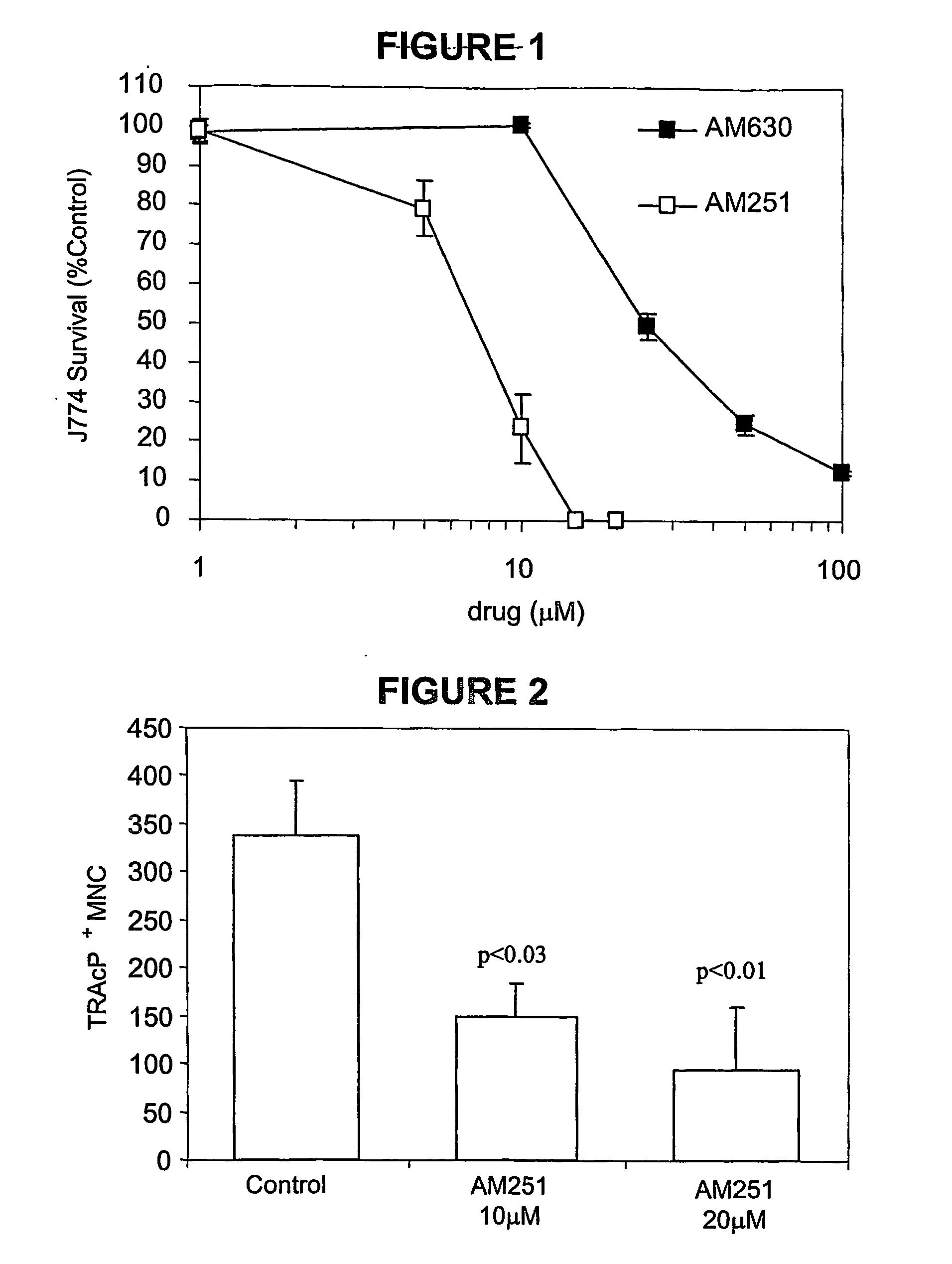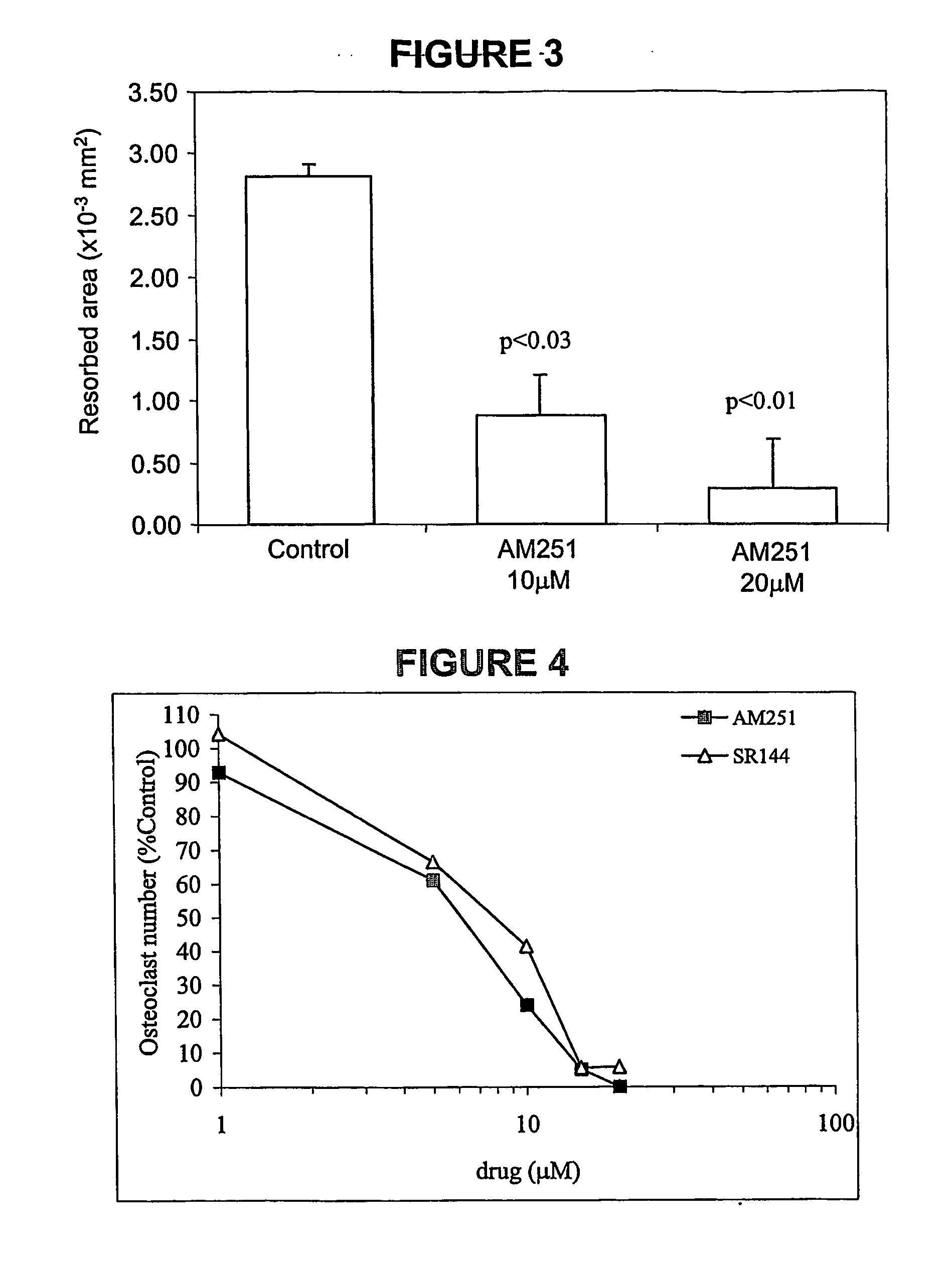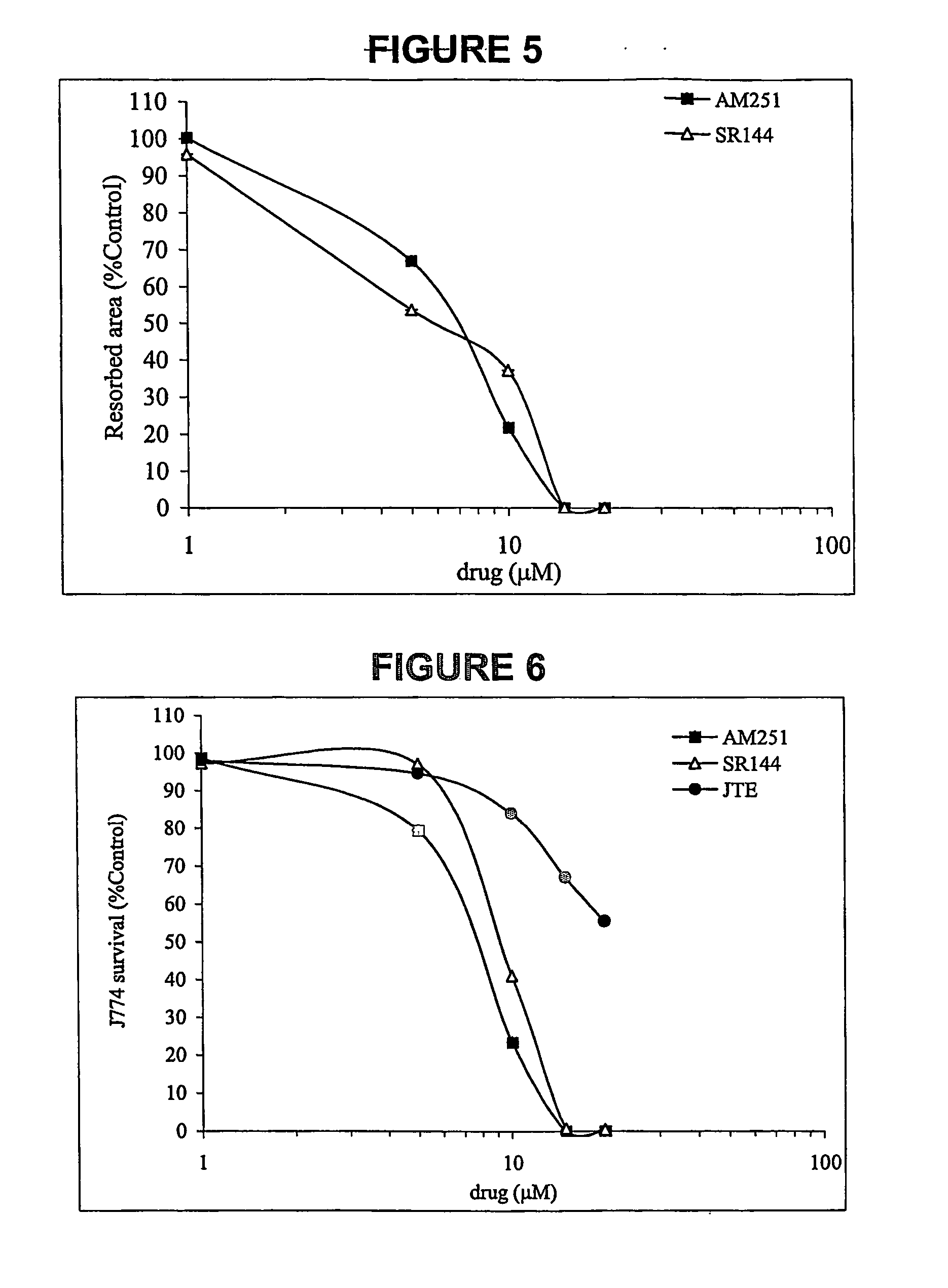Cannabinoid receptor inverse agonists and neutral antagonists as therapeutic agents for the treatment of bone disorders
a cannabinoid receptor and inverse agonist technology, applied in the direction of biocide, plant growth regulators, plant ingredients, etc., can solve the problems of bone pain, bone deformity, fracture and abnormal calcium and phosphate homeostasis, and mechanical weak and easy fractur
- Summary
- Abstract
- Description
- Claims
- Application Information
AI Technical Summary
Benefits of technology
Problems solved by technology
Method used
Image
Examples
examples
[0784] The following examples are provided solely to illustrate the present invention and are not intended to limit the scope of the invention, as described herein.
synthesis examples
Synthesis Example 1-1
Sodium salt of 4-(4-chloro-3-methyl-phenyl)-4-oxido-2-oxo-but-3-enoic acid ethyl ester
[0785]
[0786] Sodium (1.36 g) was dissolved in methanol (35 ml) and cooled to room temperature. 4-Chloro-3-methylacetophenone (10 g) was added followed by diethyl oxalate (8 ml) in methanol (10 ml). A slurry resulted. Addition of methanol (10 ml) failed to fluidise the mixture and it was left to stand for 2 hrs. Diethyl ether (150 ml) was added and the suspension stirred for 1 hr. Filtration and washing with ether gave the title product as a pale green solid.
synthesis example 1-2
5-(4-Chloro-3-methyl-phenyl)-1H-pyrazole-3-carboxylic acid methyl ester
[0787]
[0788] The 4-(4-chloro-3-methyl-phenyl)-4-oxido-2-oxo-but-3-enoic acid ethyl ester (8.8 g) was dissolved in acetic acid (100 ml) with gentle heating. After cooling to room temperature, hydrazine monohydrate (1.7 ml) was added dropwise. The solution was refluxed for 4.5 hours and then stirred overnight, after which a solid had been precipitated. The solid was filtered and washed with water. Recrystallisation from ethanol gave the title product as a white solid.
PUM
 Login to View More
Login to View More Abstract
Description
Claims
Application Information
 Login to View More
Login to View More - R&D
- Intellectual Property
- Life Sciences
- Materials
- Tech Scout
- Unparalleled Data Quality
- Higher Quality Content
- 60% Fewer Hallucinations
Browse by: Latest US Patents, China's latest patents, Technical Efficacy Thesaurus, Application Domain, Technology Topic, Popular Technical Reports.
© 2025 PatSnap. All rights reserved.Legal|Privacy policy|Modern Slavery Act Transparency Statement|Sitemap|About US| Contact US: help@patsnap.com



